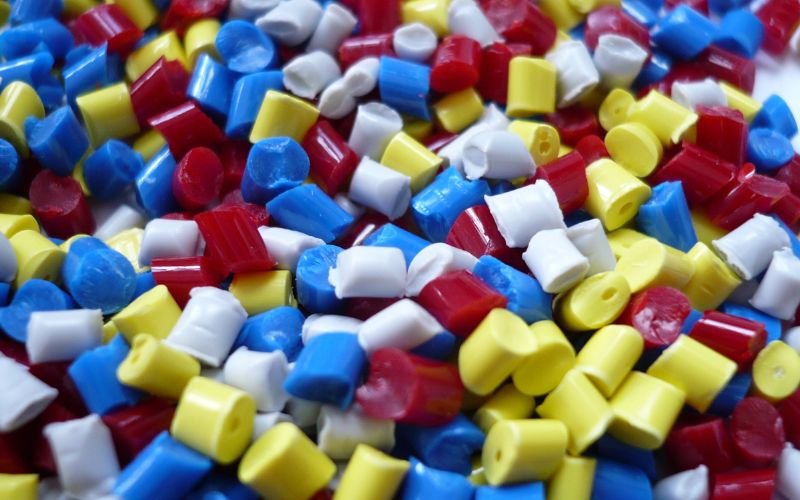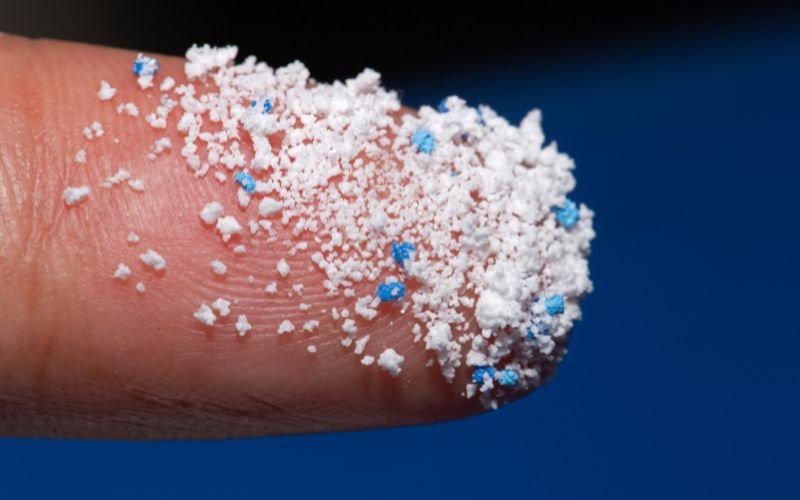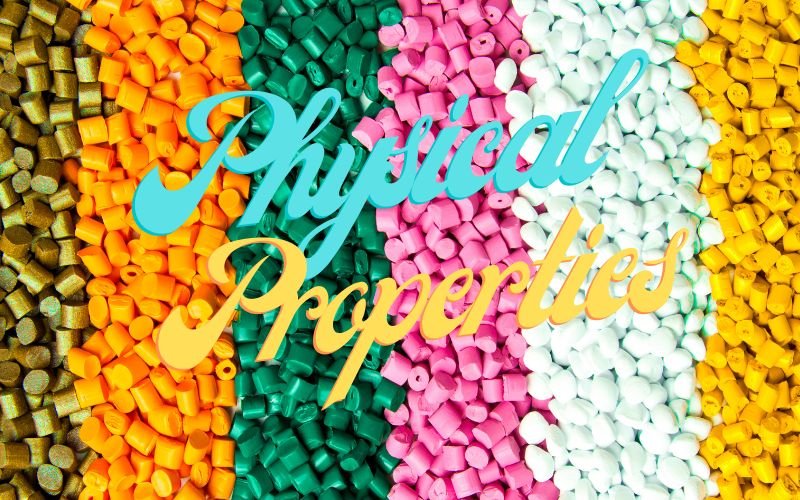Ievads
Hei! Vai esat gatavs atšķetināt plastmasas noslēpumus? Sākot ar viedtālruni rokā līdz automašīnas informācijas panelim, plastmasa ir visur. Un šodien mēs dziļi ienirstam, lai atklātu to, kas viņiem liek ķeksēt.
Kāpēc tas ir svarīgi
Plastmasas īpašību izpratne nav tikai zinātniekiem. Tas ir paredzēts ikvienam, kurš lieto, labi, jebkas. Ar ilgtspējību un inovācijām priekšplānā zinot, ka jūsu plastmasa ir vairāk nekā tikai parocīga - tā ir būtiska.

Plastmasas veidi & Viņu iezīmes
Plastmasa nav vienas izmēra darījums. Dažādiem veidiem ir unikālas funkcijas, kas pielāgotas konkrētiem uzdevumiem. Sadalīsim tos.
Momentuzņēmums: augstākās plastmasas fizikālās īpašības
| Plastmasas tips | Blīvums | Kušanas punkts | Izturība | Kur jūs to atradīsit |
|---|---|---|---|---|
| Polietilēns (PE) | 0.91-0,96 | 115-135 ° C | 20-40 MPa | Iepirkumu somas, pudeles |
| Polipropilēns (PP) | 0.90 | 130-171 ° C | 25-40 MPa | Pusdienu kastes, automašīnu detaļas |
| PVC | 1.3-1.45 | 100-260 ° C | 40-80 MPa | Santehnika, vinila grīdas segums |
| Polistirols (PS) | 1.04-1.07 | 100-270 ° C | 40-55 MPa | Kafijas tases vāki, iepakojums |
| PET | 1.38-1.39 | 250-260 ° C | 50-75 MPa | Sodas pudeles, tekstilizstrādājumi |
| Polikarbonāts (PC) | 1.2 | 155-297 ° C | 55-75 MPa | Brilles, DVD |
| Poliuretāns (PU) | 1.20-1.25 | 130-210 ° C | 20-60 MPa | Izolācija, matrači |
| Ptfe | 2.2 | 327 ° C | 25-35 MPa | Nelipīgas pannas |
| Abs | 1,05-1.07 | 105-125 ° C | 40-70 MPa | LEGO ķieģeļi, tastatūras |
Dziļā niršana: stāsti aiz statistikas
Katram plastmasas tipam ir savs unikālais stāsts, īpašības un lietojumi. Iepazīsim viņus labāk:
Polietilēns (PE)
Zemākais rādītājs: Visizplatītākā plastmasa apkārt. Viegls, izturīgs pret mitrumu un neticami daudzpusīgs.
Uzmanības centrā: Tās saspiestās kečupu pudeles un jūsu pārtikas maisiņi? Tas ir PE darbībā.
Polipropilēns (PP)
Zemākais rādītājs: Izturīgs un daudzpusīgs. Pazīstams ar izturību pret augstu temperatūru un noguruma izturību.
Uzmanības centrā: Jūsu mikroviļņu drošie konteineri un automašīnas akumulatora korpusi? Visa krusa pp.
PVC (polivinilhlorīds)
Zemākais rādītājs: Pielāgojams un izturīgs. Var būt gan stingrs, gan elastīgs, padarot to par iecienītu būvniecībā un modē.
Uzmanības centrā: Caurules jūsu mājās un stilīgie lietus zābaki? PVC maģija.
Polistirols (PS)
Zemākais rādītājs: Viegls un veidots. Izolācijas un aizsargājoša iepakojuma virzība.
Uzmanības centrā: Jūsu kafijas tases vāks un aizsargājošais iepakojums elektronikai? PS ir nedziedāts varonis.
PET (polietilēntereftalāts)
Zemākais rādītājs: Skaidrs un spēcīgs. Dzērienu nozares superzvaigzne.
Uzmanības centrā: Tās dzidrās sodas pudeles un jūsu ērtie poliestera krekli? Mājdzīvnieka ieguldījums.
Polikarbonāts (PC)
Zemākais rādītājs: Grūts un caurspīdīgs. Pazīstams ar savu optisko skaidrību un izturību pret triecieniem.
Uzmanības centrā: Jūsu brilles objektīvi un DVD? PC to padara iespējamu.
Poliuretāns (PU)
Zemākais rādītājs: Elastīgs un izturīgs. Iecienītākais putām un hermētiķiem.
Uzmanības centrā: Jūsu ērtais matracis un hermētiķis jūsu vannas istabā? PU rokas darbs.
PTFE (politetrafluoretilēns)
Zemākais rādītājs: Nereaģējošs un slidens. Nelipīgs varonis.
Uzmanības centrā: Jūsu nelipīgas pannas un noteiktas smērvielas? Paldies ptfe.
ABS (akrīlonitrila butadiēna stirols)
Zemākais rādītājs: Spēcīgs un spīdīgs. Rotaļlietu un noteiktas automobiļu detaļu iecienītākais.
Uzmanības centrā: Tie krāsainie LEGO ķieģeļi un jūsu spīdīgie tastatūras atslēgas? Abs darbībā.

Kas ietekmē plastiskās īpašības
Plastmasu var pielāgot un noregulēt neskaitāmos veidos. Atklāsim faktorus, kas veido to īpašības.
Piedevas: spēles mainītāji
Sākot ar plastmasas izturīgu saules izturēšanos un beidzot ar tām dinamiskas krāsas, piedevas ir slepenā mērce.
- UV stabilizatori: Aizsargājiet plastmasu no saules bojājumiem.
- Liesmas slāpētāji: Samazināt uzliesmojamību.
- Plastifikatori: Pastiprināt elastību.
Ražošana: ideālas plastmasas izstrāde
Plastmasas veidošanas veids var dramatiski mainīt to īpašības.
- Iesmidzināšanas formēšana: Lieliski piemērots detalizētām formām, bet var radīt stresu.
- Izpūšanas formēšana: Lieliski piemērots dobiem priekšmetiem, piemēram, pudelēm.
- Ekstrūzija: Ideāli, lai radītu garus nepārtrauktus produktus, piemēram, caurules.
Vide: plastmasa reālajā pasaulē
Reālās pasaules apstākļi var mainīt plastmasas spēli.
- Temperatūra: Daži plastmasa nevar tikt galā ar karstumu (vai aukstumu).
- Mitrums: Ūdens var būt plastmasas labākais draugs vai sliktākais ienaidnieks.
- Ķīmiska iedarbība: Dažas plastmasas pretojas skābēm, bet ar šķīdinātājiem varētu pasliktināties.
Pārstrādājamība: pasakā vērpjot
Ilgtspējības laikmetā pārstrādāts saturs arvien biežāk ir plastmasas izstrādājumos. Pārstrādātai plastmasai var būt nedaudz atšķirīgas īpašības iepriekšējās apstrādes vai novecošanās dēļ.
- Pēc patērētāja pret industriālu: No kurienes nāk pārstrādātais materiāls, var ietekmēt kvalitāti.
- Piesārņotājs: Pārstrādātā plastmasa var saturēt piemaisījumus, kas ietekmē to īpašības.

Ilgtspējība: plastmasa zaļā laikmetā
Plastmasa un ilgtspējība? Tā ir karsta tēma. Kaut arī plastmasa piedāvā daudzas priekšrocības, viņu vides nospiedums ir nenoliedzams. Bioloģiski noārdāmā plastmasa, pārstrādes iniciatīvas un pāreja uz apļveida ekonomiku ir vienādojuma sastāvdaļa, lai plastmasu padarītu par planētām draudzīgāku.
Bioloģiski noārdāms pret tradicionālo
- Bioloģiski noārdāmās plastmasas: Dabai draudzīga, bet ne vienmēr tik izturīga.
- Tradicionālā plastmasa: Ilgstoši, bet var būt vides galvassāpes.
Pārstrāde: dodot plastmasu otro iespēju
- Pārstrādes čempioni: PET un HDPE vada iepakojumu.
- Pārstrādes apakšveļi: PVC un PS saskaras ar izaicinājumiem, bet tiem ir potenciāls.
| Plastmasas tips | Bioloģiski noārdāms | Ļoti pārstrādājams | Izplatīti lietojumi |
|---|---|---|---|
| PET | Nē | Jā | Pudeles |
| HDPE | Nē | Jā | Pārtikas preču somas |
| PVC | Nē | Nē | Pīpes |
| PLA | Jā | Nē | Pārtikas iepakojums |
Aprites ekonomika: jauna cerība
Apļveida ekonomikas jēdziena mērķis ir samazināt atkritumus un maksimāli izmantot resursus. Šeit tādi produkti kā plastmasa tiek pārstrādāti, salaboti vai atjaunoti, lai pagarinātu dzīves ciklu.
- Moduļu dizains: Plastmasas produktu izveidošana, ņemot vērā demontāžu, var atvieglot tos pārstrādāt vēlāk.
- Pārstrāde: Atkritumu materiālu pārveidošana jaunos materiālos vai labākas kvalitātes izstrādājumos.
Patērētāju atbildība
Visbeidzot, pienākums nav tikai ražotājiem; Arī patērētāji var izdarīt apzinātu izvēli.
- Uzmanīgs patēriņš: Izvēlieties produktus ar mazāk vai pārstrādājamu iepakojumu.
- Vietējie pārstrādes kodi: Iepazīstiet sevi ar pārstrādes kodiem jūsu reģionā, lai nodrošinātu, ka jūs pareizi iznīcināt plastmasu.
Praktiski apsvērumi rūpniecībai
Sākot ar iepakojumu un celtniecību līdz veselības aprūpei un elektronikai, plastmasa ir atradusi māju visur, pateicoties to unikālajām īpašībām un pielāgošanās spējām.
Viedie izdevumi: kvalitāte pret izmaksām
Iedomājieties, ka jums ir superplastika, kas var izturēt Sahāras karstumu un Antarktīdas aukstumu. Izklausās forši, vai ne? Bet vai tiešām jums tas ir vajadzīgs? Tas viss ir saistīts ar labāko sprādzienu jūsu buks.
- Elites plastmasa: Lieliski piemērots nišas vajadzībām, bet varētu saspiest kabatu.
- Ikdienas plastmasa: Lielākas vajadzības lielapjoma vajadzībām, nesalaužot banku, bet, iespējams, nav tādu “īpašs” funkcijas.
Noteikumu grāmatas nolietojums: uzturēšanās skaidrā
Dažādas nozares, dažādi noteikumi. It īpaši, ja runa ir par plastmasu. Neatkarīgi no tā, vai esat pārtikā, farmācijā vai automašīnās, jums ir pamatnostādnes, kas jāievēro.
- Barotie ēdieni: Ja tas pieskaras ēdienam, labāk ir FDA pamats.
- Vispirms drošība: Scenārijā, kas pakļauts ugunsgrēkam? Jums būs nepieciešama liesmu izturīga plastmasa.
Eko vienādojums: plastmasas zaļā puse
Jūsu plastmasas izvēle nav tikai par to, ko tā var darīt. Tas attiecas arī uz tās ietekmi uz Mātes Zemi.
- Tīra radīšana: Dodieties uz plastmasu, kas dzimusi no videi draudzīgiem procesiem.
- Pēcnāve: Padomājiet par to, kur nonāks jūsu plastmasa. Pārstrādāt? Poligons? Plānojiet uz priekšu.
Piegādes ķēdes stratēģija: plastmasas iegūšana savlaicīgi katru reizi
Tas nav tikai pareizās plastmasas izvēle. Tas ir saistīts ar to iegūšanu, kad jums tas ir nepieciešams, kur jums tas ir nepieciešams.
- Mājas pret pasauli: Vietējie avoti samazina transporta emisijas, bet varētu ierobežot dažādību.
- Krājumi vai racionalizēšana?: Lielapjoma pirkšana ietaupīt naudu, bet tikai laika iegūšana ietaupa vietu.
Nākotne uz priekšu: paliekot priekšā plastmasas spēlē
Plastmasas pasaule vienmēr mainās. Jauni materiāli, jaunas metodes. Vai jūs sekojat līdzi?
- Tech Watch: Ieguldiet pētniecībā. Šodienas eksperiments varētu būt rītdienas spēles mainītājs.
- Atgriezeniskās saites cilpa: Klausieties lietotājus. Viņu atziņas varētu vadīt jūsu nākamo plastmasas izvēli.
Secinājums
Sākot ar ikdienas priekšmetiem, kurus mēs izmantojam līdz inovācijām, kas virza nozares, plastmasa nenoliedzami ir neatņemama. Tie ir cilvēku atjautības apliecinājums, piedāvājot daudzpusību un funkcionalitāti neskaitāmajās lietojumprogrammās. Virzoties uz priekšu, izaicinājums ir to potenciāla izmantošana, vienlaikus viegli virzoties uz mūsu planētu.





